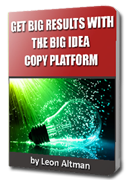Most case studies follow one of two main formats. Either a traditional or a feature story format. Each has its advantages. It’s important for the company to either pick one case study format and have the writer follow it or have the writer choose one that seems appropriate for the company’s purposes.
Traditional format
The traditional format follows a basic progression and generally uses a set pattern of subheads: Company/customer profile; background; challenge; solution; results. There can be variations on the exact wording of the subheads and sometimes “challenge” comes first, but it is essentially a set formula.
The main advantage of this format is that the reader knows exactly what to expect and where to find specific information. Company info is here, challenge is there, etc. This format makes works with either short or long case studies.
Feature story format
In the feature story format the same elements appear in generally the same order. However, the case study reads more like a feature story in a magazine. The lead ( first sentence and paragraph) take you right into the story. It is meant to capture your attention from the beginning and get you engaged as a feature story might do.
Rather than follow a formula, the subheads are more descriptive and story oriented. They develop the narrative and pull the reader through.
The feature story format is usually more engaging and more interesting to read. The reader can also glean much of the story by skimming through the subheads since they are part of the narrative.
The disadvantage of the feature story format is that they take more skill to write. So the company must make sure to use writers who can communicate the case story in this way.
Whether you use a traditional or feature story it is important to stick to one format when presenting multiple case stores within a document or web page. The consistency makes it easier for the reader to go through a number of case studies in one sitting and absorb the points the company wants to communicate.
More at case study writer

Speak Your Mind